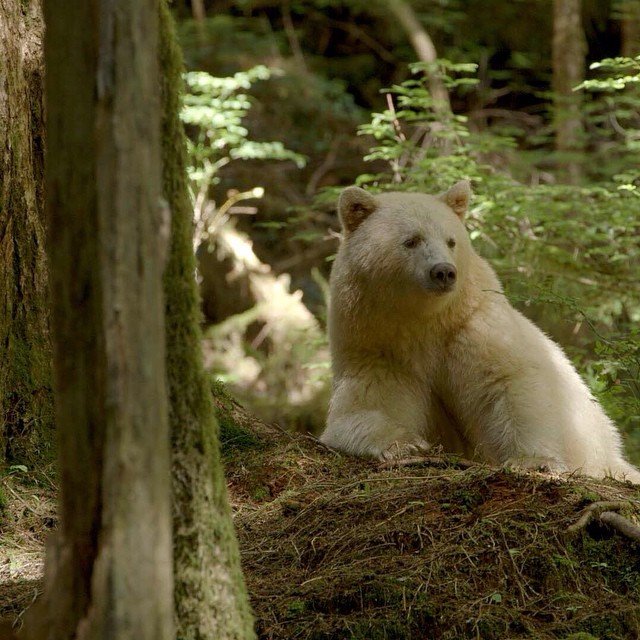
Photo Credit: Jon Rawlinson – https://www.flickr.com/photos/london/15185520222/
Sheltered within the ancient red cedar trees of the Great Bear Rainforest is a rare white bear that is neither polar bear nor albino but a “spirit bear,” a black bear with a vanilla coat so mystically beautiful it is revered by the First Nations people who have lived among the bears and protected them for millennia.
The Kitasoo/Xai’xais First Nation have lived in the Great Bear Rainforest for 14,000 years. They have shared the forest and the salmon with a very special creature they call moskgm’ol (white bear). Their legend of the origin of moskgm’ol holds that: “Goo-wee (Raven) made one in every ten black bears white to remind the people of a time when glaciers covered the land.”
The Spirit bear is treasured by the Kitasoo/Xai’xais and the Coastal First Nations that live alongside them. It is for their protection, and for the protection of their territorial lands that the Kitasoo/Xai’xais and many other Coastal First Nations on the north coast of B.C. support Bill C-48, an important piece of environmental legislation that protects the precious lands and waters inhabited by the Spirit bear from the devastation of oil spill.
Indeed, the Spirit bear only lives in Canada and is found primarily on the central and north coast of B.C. Two islands, both off of the north coast host the largest number of Spirit bears: Princess Royal and Gribbell Island.
In studying the phenomenon known as Kermodism, scientists now know how black bears are born white, they’re just not sure why. The phenomenon is triggered by a recessive mutation – the same mutation associated with red hair and fair skin in humans. To be born with white fur, a black bear must inherit the gene from both parents. The parents themselves don’t need to be white; however, they do need to possess the recessive mutation.
Similarly, there are many widely held theories as to why black bears are born white. The most prominent being that spirit bears have continued to harbor the trait left over from the days of the ice age. Isolation from the outside world, remoteness and unwillingness by the local first nations to hunt or trade the spirit bear has protected them for millennia.
Spirit bears thrive in healthy coastal ecosystems. Threats to their habitats and local feeding and watering holes could devastate the population. As one of the rarest and most coveted animals in the world, we should count our blessings that Canadians are lucky enough to shelter such a majestic and revered animal within our incredible landscape. With estimates at approximately 50-150 Spirit bears, let us work together to protect their habitat as well as the rich heritage and cultural stories that surround their survival. Let us entrench in law Bill C-48, and do all we can to preserving a creature found exclusively in the Great Bear Rainforest.